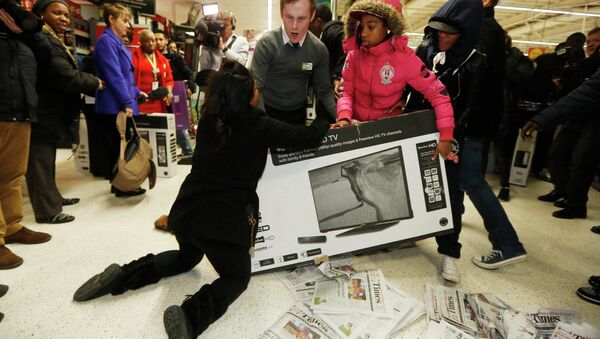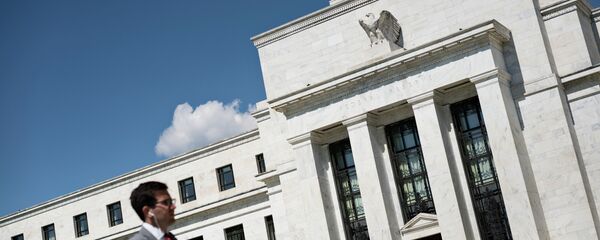Kristian Rouz – After having slid in March, the US Price index rebounded last month, pointing to firmer broader economic growth mainly due to optimistic retail sales reports. The first quarter of this year was a bit of a disappointment for the US economy as expansion slowed to its weakest rate in three years, however, a tighter labour market and improved consumer confidence render overall expectations modestly upbeat for the current quarter.
E-commerce showed an 11.9-percent annualised increase in April, the Commerce Department said, adding pressure on the bricks-and-mortar segment. US shoppers are increasingly reluctant to go out and buy things, choosing internet orders and home delivery, augmented by multiple convenient shipping options.
"The economy picked it up a notch from the slow start earlier this year, but the inflation fires are not burning brightly and this will likely keep the Fed on just a gradual pace for interest rate hikes later this year," Chris Rupkey of New York-based MUFG Union Bank said.
In March, retail sales added a dismal 0.1 percent, making the April figures look more attractive despite the retail segment still underperforming compared to earlier predictions. Overall sales added 4.5 percent last month.
US benchmark inflation, or Consumer Price Index (CPI), according to the data from the Labor Department, rose by 0.2 percent in April after having declined by 0.3 percent the previous months. Meanwhile, annualised CPI at this point stands at 2.2 percent, which is above the Fed’s 2-percent target. This is why the Fed GDP expectations are quite optimistic for this month, and a hike in US base borrowing costs might immediately follow the Q2 GDP report, should it fall in line with the current Atlanta Fed projections.
In March, however, the annualised US CPI stood at 2.4 percent, meaning inflation has slowed somewhat.
US retail sales, meanwhile, are a complicated indicator. Even though e-commerce posted a robust expansion, sales in the bricks-and-mortar segment declined by 3.7 percent year-on-year, according to the Commerce Department. This reflects the current hardship of the traditional US mall, and overall the bricks-and-mortar retail segment is facing disinvestment pressures. One of the biggest US clothing retailers, JC Penney, boasting over 1,000 branches across the nation, reported a 3.7-percent decline in net sales between February and April.
"Obviously we had a very challenging quarter in a challenging environment," said JC Penney chief financial officer Ed Record.
The decline of the bricks-and-mortar segment also owes a lot to the decimation of the US middle class during the years of weak post-Great Recession recovery, including the decline in manufacturing jobs and polarisation of incomes across the American Midwest – once the consumer powerhouse of the nation. Still, with e-commerce gaining momentum, the changing landscape of domestic consumption point to firming upward inflation pressures.
Another factor, supporting the Fed’s view of the acceleration in the US economy, is the labour market. US unemployment dropped to 4.4 percent last month, whilst labour participation rose to 65 percent from 62 percent in 2012.
"The best labour market in nearly 30 years should tell Fed officials that additional monetary stimulus is not required. We expect them to put another rate hike notch on their belts at the upcoming June meeting," MUFG Union Bank’s Rupkey said.
This means the broader inflation might reach the Fed’s 2-percent target sooner than expected, and opens a likelier possibility that the base interest rate go up in June or July.






